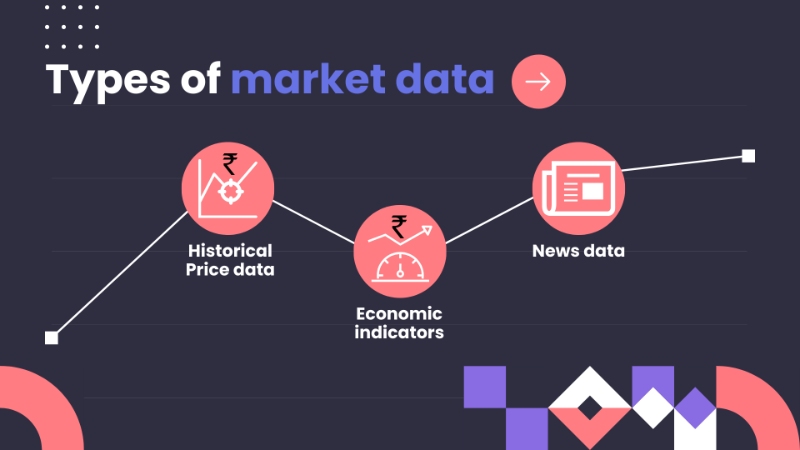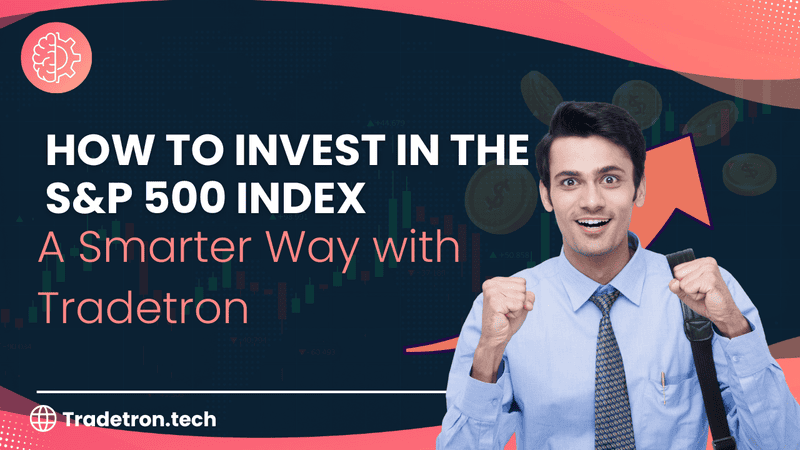Contents
What Is Algo Trading?

Algo trading, or algorithmic trading, is a unique stock trading technique in terms of the frequency and volume of stocks being traded.
Using intelligent, automated algorithms allows traders to scale their volume faster.
However, such a strategy may amplify the risks involved in algo trading.
This makes it critical for traders to reinforce and optimize their algo trading strategies.
In theory, a sound algo trading strategy can help you make profits at a scale and frequency that manual trader can’t.
However, the million-dollar question is how can you ensure that your algo trading strategy is bullet-proof?
The answer is: by following a systematic, data-backed process that makes your strategy robust enough to meet the inherent uncertainties and volatility of the market.
Here are the steps involved in that process:
Define your trading objectives
Gather and analyze market data
Develop a trading algorithm
Implement and test your strategy
Let’s now explore each of these steps in detail.
Define your algo trading objectives
Irrespective of the methods involved, every solid trading strategy follows a well-defined set of objectives.
Knowing what you want to achieve through trading is an important first step in the process.
Importance of having well-defined goals
Specific, measurable, and well-defined goals are the backbone of any trading strategy.
Having definite investment goals in mind allows you to channel your efforts in a definite direction instead of going through it haphazardly.
You must also ensure that your goals are quantifiable so that you can monitor and measure your progress regularly.
Here’s an example: ‘invest 30% of all savings in finance, 50% in real estate, and 20% in tech stocks’.
Unlike the first example, this is a precise and measurable goal with a clear objective of diversification to reduce investment risks.
Types of trading objectives
Depending on your short and long-term goals, you can opt for several types of investment objectives.
A few of the most common ones are:
Generating profits over a short term - Investing in stocks that are expected to do well in the immediate future.
Generating profits over the long term - Investing in currently low-priced stocks with great growth potential.
Managing investment risks and return - Building a diverse portfolio with a healthy risk-to-reward ratio.
Gather and analyze market data
Once you have figured out a set of well-defined objectives, it’s time to start looking for market trends that can help you meet those objectives.
Analyzing extensive market data collected from several different sources is the best way for you to spot and earmark these trends.
You should, of course, always ensure that this data is obtained through reliable sources.
Types of Market Data

Investors usually crunch several types of market data to gain valuable future investment insight.
They include:
1. Historical Price Data
Charting price patterns is perhaps the most commonly used method of predicting future stock behaviour.
Collecting a substantial volume of historical price data can help you spot price patterns that can guide your investment decisions.
2. Economic indicators
Economic indicator is a general term that refers to macroeconomic data that can help analysts make predictions about financial markets.
No matter how stable, every business sector is tied to several variables like geopolitics, consumer trends, and global cultural events.
The ongoing Russia-Ukraine war is a case in point. While the conflict is restricted to a small region of the world, it has been affecting trade policies, market sentiment, and even food prices in several countries around the world.
Economic indicators like the wholesale price index, food price index, and real gross domestic product (Real GDP) can help you gauge the actual effect of geopolitical events like these on financial markets.
3. News data
News data can be highly unstructured but still an important source of market data.
It informs traders of different events taking place within and outside public companies that might affect share prices.
Tips for gathering and analyzing market data
Analyzing market data isn’t as simple as crunching numbers. The data is made up of several different forms of information in varying formats.
For instance, economic indicators like Real GDP encompass specific metrics, whereas news data is mostly contextual information.
Analysts must convert all these different types of data into one standard format to be able to work with them.
Here are a few handy tips that can help you gather and analyse data efficiently for your algo trading models.
Always consult highly-reliable sources of information.
Convert all your gathered data to a single, structured format.
Filter and standardize your data for missing values and other discrepancies.
Use data visualization tools to understand and analyze the results of your analysis.
To elaborate on the last point, your data analysis tools will present results in the form of numbers, which can be difficult to grasp or translate into real-world scenarios.
Visualizing these numbers in the form of charts, bar graphs, and pie charts can be one way of making sense of them.
Develop a trading algorithm
Now that you know which trends you’d like to target, it is time to develop a comprehensive trading algorithm to make the best returns on your stock investments.
Types of Algo Trading Strategy
Here are some of the most common types of algo trading strategy used by traders.
1. Trend-following
This is a simple algorithmic strategy where a computer program is expected to place trades based on historical price trends.
For example, a program can be instructed to buy more shares if its 30-day average price goes above the 120-day moving average.
Conversely, it can be programmed to sell these shares if the 30-day average falls below the 120-day moving average.
2. Mean-reversion
The mean-reversion strategy works on the principle that each share will eventually stabilize to a mean price range despite price fluctuations.
The computer algorithm is then instructed to execute trades when the share price breaks in and out of this price range.
3. Arbitrage strategy
The arbitrage strategy is used for trading stocks that are listed on different stock exchanges simultaneously.
For example, Tata Motors is listed on both the NSE and the BSE in India.
An arbitrage algorithm automatically identifies where the stock costs less and sells it on another exchange for a higher price.
Implementing and testing your algorithm
Several public trading platforms available on the internet like Tradetron allow you to develop and implement your trading algorithms.
Once implemented, these algorithms are linked to your trading accounts, where they execute trade orders automatically.
It is always advisable for traders to test and optimize their algorithms before actually deploying them.
This helps them spot and solve small errors in time, making their trading algorithms truly bulletproof.
You can either test using a backtesting technique, where historical data is passed through the algorithm to check its accuracy, or live-testing, where real-time data is fetched from the market and fed to trading algorithms.
Selecting the right trading platform
Choosing the right trading platform is vital for testing and optimizing your trading strategies.
At Tradetron, we ensure that users have complete control over their algo trading models.
Our easy-to-use strategy builder allows every trader (even non-tech-savvy ones!) to build, customize, and optimize trading strategies down to the finest details.
Tradetron live testing and backtesting modules further allow traders to regularly check their algorithms and monitor their efficiency.
We are a comprehensive algo trading strategy building platform where you can build, test, and deploy incredibly sophisticated trading models.
Frequently Asked Questions On Algo Trading Strategy
1. What is the best strategy for algo trading?
The best strategy for algo trading will vary depending on the individual trader's goals and preferences.
However, here are some general guidelines to consider:
1. Develop a robust algorithm: The foundation of any successful algo trading strategy is a well-designed algorithm that takes into account various market factors such as price movements, volume trends, and other relevant data.
This requires careful testing and analysis to ensure accuracy and effectiveness.
2. Stay informed: Keep up with the latest news and developments in your chosen market sector or asset class.
This can help you identify potential opportunities or risks that may impact your trades.
3. Use risk management techniques: Algo trading involves inherent risks, so it’s important to manage these risks through measures like stop-loss orders or position sizing based on risk tolerance levels.
4. Continuously evaluate performance: Regularly assess the performance of your algorithm against its benchmarks and adjust it accordingly if necessary.
5. Consider diversification: Diversify your portfolio by spreading out investments across different markets or asset classes rather than focusing solely on one area.
Ultimately, the key to success in algo trading is developing an effective strategy tailored to your specific needs while continually adapting it based on changing market conditions over time.
2. Is Algo trading free?
No, algo trading is not free. While there are some platforms and tools that offer free access to certain features of algo trading, such as backtesting or simulation environments, the actual execution of trades typically involves fees.
Even if the algo itself is free, there are often other costs associated with algo trading such as data fees and infrastructure expenses (such as servers).
These costs can add up quickly for high-frequency traders who require fast execution speeds and real-time market data.
Furthermore, developing your own custom algorithms can also incur significant costs in terms of research time and programming resources.
So while there may be some opportunities to use pre-built algos at no cost, overall the cost of algo trading will depend on individual circumstances and preferences.
3. Is Algo Trading easy?
Algo trading, also known as algorithmic trading, involves using computer programs to automate the process of buying and selling financial securities.
While it may seem like an easy way to make money in the stock market, algo trading is actually quite complex.
On one hand, setting up a basic algorithm can be relatively simple for someone with programming skills.
However, creating a profitable strategy requires a deep understanding of financial markets and data analysis techniques.
Maintaining and optimizing algorithms over time can be challenging due to constantly changing market conditions and the need for continuous monitoring.
Moreover, implementing algo-trading strategies often requires significant investment in technology infrastructure and advanced software tools that offer real-time data feeds and sophisticated analytics capabilities.
4. Which is the best Algo platform in India?
The best Algo trading platform in India would depend on the specific needs and preferences of the trader.
Tradetron is one of the best algo platform in India.
Some popular options include Fyers, Upstox Pro Web, Angel Broking Trade Smart Online, and Alice Blue ANT Meta.
Visit our page to know more about who we are and how we can get you started with high-level algorithmic trading.



 Made with Superblog
Made with Superblog